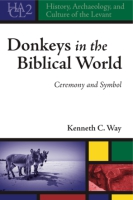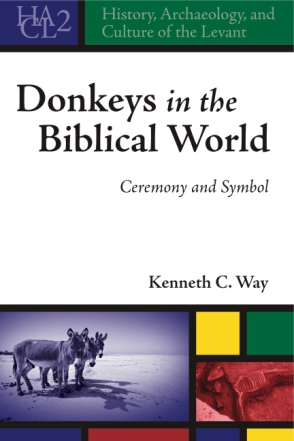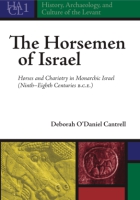Donkeys in the Biblical World
Ceremony and Symbol
Kenneth C. Way
In this volume, Kenneth Way explores the role of donkeys in the symbolism and ceremonies of the biblical world. His study stands alone in providing a comprehensive examination of donkeys in ancient Near Eastern texts, the archaeological record, and the Hebrew Bible. Way demonstrates that donkeys held a distinct status in the beliefs and rituals of the ancient Near East and especially Canaan-Israel.
- Description
- Table of Contents
The focus on ceremony and symbol encompasses social and religious thoughts and practices that are reflected in ancient texts and material culture relating to the donkey. Ceremonial considerations include matters of sacrifice, treaty ratification, consumption, death, burial, “scapegoat” rituals, and foundation deposits; symbolic considerations include matters of characterization, association, function, behavior, and iconographic depiction. However, the distinction between ceremony and symbol is not strict. In many cases, these two categories are symbiotic.
The need for this study on donkeys is very apparent in the disciplines that study the biblical world. There is not a single monograph or article that treats this subject comprehensively. Philologists have discussed the meaning of the Amorite phrase “to kill a jackass,” and archaeologists have discussed the phenomenon of equid burials. But until now, neither philologists nor archaeologists have attempted to pull together all the ceremonial and symbolic data on donkeys from burials, ancient Near Eastern texts, and the Hebrew Bible. Way’s study fills this void.
Foreword
Acknowledgments
Abbreviations
1. Introduction
1.1. Focus and Contribution
1.2. History of Scholarship
1.3. Problems and Prospects
1.4. Scope and Limitations
1.5. Methodology??
1.6. Animals in the Biblical World
1.7. Summary
2. The Donkey in Ancient Near Eastern Texts
2.1. Egyptian Sources
2.2. Northwest Semitic Sources
2.3. Hittite Sources
2.4. Akkadian Sources
2.5. Sumerian Sources
2.6. Summary
3. The Donkey in Near Eastern Archaeology
3.1. Egypt
3.2. Israel-Palestine
3.3. Syria
3.4. Iraq
3.5. Other
3.6. Historical Summary
3.7. Interpretations
4. The Donkey in Biblical Literature
4.1. Terminology
4.2. Review of Previous Observations
4.3. Shechem Traditions (Gen 33:18–34:31, Josh 24:32, Judg 8:33–9:57)
4.4. Redemption of the Firstborn (Exodus 13:13, 34:20)
4.5. Balaam’s Jenny (Numbers 22:22–35)
4.6. Man of God from Judah (1 Kings 13)
4.7. Donkey Burial (Jeremiah 22:19)
4.8. Summary
5. Synthesis
5.1. Symbolic Significance of Donkeys
5.2. Ceremonial Significance of Donkeys
5.3. Conclusion
5.4. Future Research
Appendix: Equid Terminology
Bibliography
Indexes
Also of Interest
Mailing List
Subscribe to our mailing list and be notified about new titles, journals and catalogs.





